Flashback Friday is an occasional feature on The Magpie Mind when I finally get around to writing about something I should have covered a long time ago. Today we travel to 2010 when the Chancellor Robert R. Livingston Library of the Grand Lodge of Free and Accepted Masons of New York hosted Marsha Keith Schuchard, an authority on the subjects of Emanuel Swedenborg, William Butler Yeats, and Jacobite Freemasonry. The lecture also was sponsored by the W.B. Yeats Society of New York and the Swedenborgian New Church.
 |
| Keith Schuchard November 8, 2010 |
She has appeared at the lecterns of several Masonic venues, including Quatuor Coronati Lodge No. 2076. Her thesis is so original, as if to appear from out of the ether, so without further preamble, a flashback to November 8, 2010 in New York City. What follows is a greatly shortened version of the lecture. Any concerns of error by omission are attributable to me.
I am grateful to officials of the New York Yeats Society, the Livingston Masonic Library, and the Swedenborgian New Church for inviting me to give this lecture, and I will try to address the interests of all three groups. In the process, I will be moving back and forth from the 18th to the 20th centuries, as I trace the role of Freemasonry in the lives of Swedenborg, Yeats, and their contemporaries. It will be a complicated trail to follow, but I hope it does not become the dreaded Hodos Chameleontos, the “Path of the Chameleon,” which Yeats described as confusion, multiplicity, and unpredictability. With that caveat, let us head down the trail.
 |
| William Butler Yeats in 1903. |
This long-running melodrama was fueled by the 18th century political rivalries between “ancient” Jacobite-Tory and “modern” Hanoverian-Whig Masonic systems, with the first maintaining loyalty to the exiled Stuart royal family, and the second to the Hanoverian kings who have ruled Britain from 1714. Jacobite exiles and their multi-national supporters developed new Écossais systems, with increasingly elaborate Kabbalistic, Rosicrucian, and Templar “higher degrees,” while Hanoverian-Whig systems maintained more rationalist-Newtonian interests. Though the long dominance of Whig-Protestant historiography in the academic world meant that international Jacobite Freemasonry almost disappeared from the historical record, new generations of revisionist historians in Britain and Europe are bringing this submerged history to the surface. In the process, the important role that Protestant-Lutheran Sweden played in supporting the Jacobite cause is emerging from the historical shadows, especially from unpublished documents preserved in the Stuart Papers at Windsor Castle and international diplomatic and Masonic archives.
Though conventional academic wisdom long claimed that the Stuart cause was dead after the defeat of “Bonnie Prince Charlie” on the battlefield of Culloden in 1746, a study of Swedenborg’s political-Masonic career from 1710 to 1772 and of Mathers’ and Yeats’ political-Masonic experiences from 1888 to 1918 reveals the surprising survival of the Jacobite cause and of the old Jacobite-Hanoverian Masonic rivalries into the early 20th century. In a forthcoming book, Emanuel Swedenborg, Secret Agent on Earth and in Heaven, I will argue that Swedenborg was employed as a secret intelligence agent and financial courier for the pro-French, pro-Jacobite party of “Hats” in Sweden, who opposed the pro-English, pro-Russian party of “Caps.” In undertaking this dangerous, clandestine role, Swedenborg was motivated by genuine, even heroic, patriotism, while Sweden was threatened by defeat and even dismemberment by her powerful enemies. In the process, he and his political allies utilized Franco-Scottish or Écossais Masonic networks to carry out their political, diplomatic, and military agendas.
From the time of his first visit to London in 1710-1713, when he was reportedly initiated into a Masonic craft lodge, until his death in London in 1772, Swedenborg and his family were involved in pro-Jacobite, anti-Hanoverian activities. Curiously, some of the most dramatic moments of his participation took place in 1744-1745, when MacGegror Mathers claimed that his Scottish ancestor was taking part in the same enterprise. I will now give some examples of Swedenborg’s Kabbalistic meditations and Jacobite-Masonic predictions, when he undertook a dangerous intelligence mission to London, where government agents were desperately looking for supporters of a feared Franco-Swedish-Jacobite invasion. Before he left Amsterdam for England, Swedenborg was prepared both mystically and Masonically for his Jacobite mission.
In April 1744, while living in Holland, Swedenborg recorded in the peculiar language of his dream diary his initiation into the Jacobite high degrees of Masonry: “I was first brought into association with others... I was bandaged [blindfolded] and wrapped. I was inaugurated [initiated] in a wonderful manner. And then it was said, “Can any Jacobite be more honest?” So at last I was received with an embrace. Afterwards it was said that he ought by no means to be called so, or in the way just named… It was a mystical series.”
The word “honest” was used by Jacobites to denote faithful and discreet supporters, but his initiators worried that the word “Jacobite” was too explicit, because they were worried that Hanoverian spies had penetrated their lodges. Feeling pressured by the demands for secrecy and fearful of the risks involved in his upcoming journey, Swedenborg recorded his dreams and visions about the secret enterprise: “It seemed to me that we worked long and hard to bring in a chest, in which was contained precious things which had long lain there; just as it was a long work with Troy; at last one went in underneath and eased it onwards; it was thus gotten as conquered; and we sawed and sawed...” Wilson Van Dusen, editor of the diary, observes that Swedenborg’s reference to Troy is most curious, for the Trojan horse contained soldiers who opened the enemy gates and enabled the town to be conquered: “It is the same here. The chest contains something precious that will enable the ‘town’ to be conquered.” At this time, Swedenborg was staying with his close friend, Joachim Fredrick Preis, Swedish ambassador at The Hague, who had long participated in Jacobite schemes and who was currently facilitating the shipment of Swedish cannons through Dutch canals en route to the Jacobite forces in Scotland. Preis also helped the recruitment of Swedish soldiers serving in French regiments to join Prince Charles Edward Stewart in the planned campaign. They could indeed provide a Trojan horse to conquer the city of London.
When French political bickering and fierce storms stalled the invasion, Swedenborg laid low in London. He began writing a strange messianic treatise, in which he used Scriptural passages to predict the actions of the Jacobites and their prince to restore the Temple of Jerusalem in the North. Anti-Scottish propaganda had long identified the Scots with the Jews, while pro-Jacobite propaganda utilized quotations from Hebrew scripture in their coded correspondence. The theme of exile for Jacobite and Jew was a potent reminder of a shared fate and a call to action. It would not be beyond the paranoia (now justified) of the government decipherers to read Biblical lines as referring to Jacobite forces coming from Ireland (west) and Sweden (east), with the Stuart prince landing in Scotland (north) and the invasion coming from France (south). The main Jacobite prisoner in London was Sir Hector Maclean, former Écossais Grand Master and major planner for Sweden’s participation in the projected invasion. Maclean was held in the Tower of London, close to Swedenborg’s current residence. The Swedish Hats feared that he possessed incriminating papers about their complicity, and they pressured the Jacobites to arrange his escape. At this time, in 1745, an anti-Jacobite exposé, titled The Freemasons Crushed, revealed that a new, elite grade of Jacobite Masonry included “a tapestry with the image of a ruined temple representing decayed Freemasonry which the Scottish Masters will regenerate.” Swedenborg seemed to refer to the new Écossais degree of Architécte, when he portrayed a Jewish architect who envisions the new temple:
“Upon an exceeding high mountain...was the building of a city. There he saw a man having in his hand a measuring line. A wall surrounded the temple without, and he measured all the things... The splendor of Jova came into the temple by way of the gate looking to the east—he showed the place of the throne... The prince he shall settle in the sanctuary—the northern gate.” Swedenborg’s words would soon prove prophetic. However, by late July 1745, he sensed he was in great danger in London, and he abruptly departed just before the arrival of the Stuart prince in Scotland.
 |
| Charles Edward Stuart Bonnie Prince Charlie |
 |
| Gustav III King of Sweden |
Despite the secrecy of their meetings, the British ambassador in Florence (Sir Horace Mann) was able to suborn a French member of Gustav’s entourage and thus learned about the Masonic agreements. In the 1730s, Mann had been a member of the Hanoverian lodge in Florence, which was closed down because of the Papal Ban of 1738. After that, despite Mann’s vigilant surveillance over the Jacobites, he could learn little about developments in Écossais Masonry. On December 30, 1783, he wrote to John Udny, English consul in Leghorn, a revealing letter, which expressed his scorn for “ancient” Stuart-Templar traditions of Freemasonry: “His Swedish Majesty...has taken other steps, which though they may appear ludicrous, are not less certain. It is supposed that when the Order of the Templars was suppressed and the individuals were persecuted, some of them secreted themselves in the High Lands of Scotland and that from them, either arose, or that they united themselves to the Society of Free Masons, of which the Kings of Scotland were supposed to be hereditary Grand Masters. From this Principle the present Pretender has let himself be persuaded that the Grand Mastership devolved to him, in which quality in the year 1776, He granted a Patent to the Duke of Ostrogothica [sic] by which he appointed him his Vicar in all the Lodges in the North, which that Prince some time after resigned as many of the Lodges in those parts for want of authentic proofs, refused to acknowledge the pretended Hereditary Succession to that Denomination. Nevertheless the King of Sweden during his stay here obtained a Patent from the Pretender in due form by which He has appointed His Swedish Majesty his Coadjutor and Successor to the Grand Mastership of
all the Lodges in the North, on obtaining which the French gentleman [Mann’s spy], whom I have often mentioned in my late letters, assured me that the King expressed the greatest joy.”
Mann went on to describe Gustav III’s plan to solicit funds from Templar Masons to support their Stuart Grand Master. He also noted the continuing negotiations of Baron von Wächter in favor of the rival Strict Observance German Masons. In 1788, after the death of the no-longer “bonnie” Prince Charlie, the Masonic documents were sent to Gustav III, and the temple was indeed restored in the North—just as Swedenborg envisioned 43 years earlier.
While Gustav and Carl immersed themselves in occultist studies and experiments, they also developed Swedish Freemasonry from a Jacobite support system into an instrument of state. The king’s confidante Schröderheim described this potent mystical-political brew: “In a small circle of brethren that gathered around the king and the duke more noble objects for our works occurred. They embraced religion, communion with the underworld, with spirits, politics, morals, and alchemy.”
In 1839 in Scotland, there was a revival of the Royal Order of Heredom of Kilwinning, an 18th century Jacobite Masonic order, which had maintained close relations with Swedish and French Freemasonry. The 19th century Scottish members re-established ties with Swedish Masons, and as the great occult revival emerged in the 1880s, some Irish and Scottish nationalists began to dream that the “ancient” Écossais Freemasonry, enriched with Swedenborgian rituals, could play a political role in the growing independence movements in Ireland and Scotland. Thus, we enter the theatrical epilogue of the Masonic melodrama in which Swedenborg and his collaborators earlier played such intriguing but secretive roles.
In 1843 in Edinburgh, there was also a revival of the “Religious and Military Order of the Temple,” which caused a public controversy. Arguments about the reality of the Order of the Temple provoked new interest in 18th century Jacobite Freemasonry, which was further fueled by the romantic publications of the Sobieski Stuarts, two brothers who claimed to be the illegitimate sons of Charles Edward Stuart. In Tales of the Century (1847), they reported that the prince secretly visited Sweden ca. 1750, where he was welcomed by the Freemasons, who honored him as their leader. Despite accusations of fraud, the Sobieski brothers were treated royally by staff at the British Museum, where tales of their charismatic presence may have influenced MacGregor Mathers’ Jacobite fantasies.
As the neo-Jacobite Masonic movement began to emerge among Scottish antiquarians, it was paralleled by a neo-Swedenborgian Masonic movement among a small number of British and American initiates. The driving spirit was Samuel Beswick, who was born into a Swedenborgian family in Manchester, England in 1822. Because several important Swedish Masons who were Swedenborgians had lived in Manchester in the 1790s, it is possible that Beswick’s family became privy to Swedish oral traditions about Swedenborg’s Masonic affiliation. After moving to the United States and Canada, Beswick promulgated “The Primitive and Original Rite of Symbolic Masonry,” which he claimed to be based on earlier Swedenborgian rituals. Though his book The Swedenborg Rite and the Great Masonic Leaders of the Eighteenth Century (1870) is a frustrating mix of valuable fact and unverifiable speculation, he managed to attract several British members of the Societas Rosicruciana in Anglia, which was restricted to Master Masons. From manuscripts describing the 18th century Swedenborgian rituals, Mathers would subsequently develop the elaborate symbolism and ceremonies of The Hermetic Order of the Golden Dawn in the 1880s.
Through Mathers’ work for Golden Dawn, W.B. Yeats emerged onto the neo-Jacobite, neo-Swedenborgian, neo-Rosicrucian stage. Though Golden Dawn was not a Masonic organization, many of its members were Masons, and it drew heavily on Masonic symbolism and rituals. While Mathers was a Freemason, his co-worker Yeats maintained a much more ambiguous and troubled relationship with the fraternity.
Yeats was initially so attracted to the Kabbalistic expertise of Mathers that he was secretly drawn into his Jacobite activities, such as a brief association with the “White Rose” societies which worked for a Stuart restoration. He wanted to believe that his Protestant ancestors fought with the Jacobites in 1689 at the Battle of the Boyne where, he lamented, the Williamite victory had “overwhelmed a civilization full of religion and myth.” And he convinced himself that he was descended from James Butler, Second Duke of Ormonde, the Anglo-Irish Freemason who helped plan the Jacobite rebellion of 1715 and the Swedish-Jacobite plot of 1717. These fantasies were reinforced by his attendance at a Requiem service for “Bonnie Prince Charlie.” The Neo-Jacobite revival in the 1890s was strong enough to draw the attention of international journalists, who recognized the vulnerability of the German-derived dynasty in Britain.
Echoing 18th century Jacobite complaints about the Electors of Hanover who became kings of Britain, Mathers and his more militant White Rose colleagues argued that Queen Victoria and her Saxe-Coburg-Gotha line were German usurpers. They provided military training to their initiated brethren and dreamed of raising a “Celtic Empire” that would embrace Scotland, Ireland, Wales, Cornwall, and Brittany. Newspapers all over the world carried stories on the international “legitimist” campaign, which sought to counter the rising power of secular, socialist, and communist movements. In headlines ranging from “New Kings on Old Thrones” to the more ominous “Playing at Treason,” journalists made the supposedly dead Jacobite cause seem alive and well.
For Yeats, the best way to harness nationalist energies to the Kabbalistic power of Rosicrucian and Jacobite Freemasonry was to establish an independent “Castle of Heroes” on an island in Ireland. Yeats had “an unshakeable conviction” that “invisible gates would open...as they opened for Swedenborg.” Mathers advised him on the symbolism and rituals, and Yeats worked on the plans for nearly a decade. However, Mathers’ involvement in military planning and arms procurement for the legitimist campaigns led to his ejection from Golden Dawn and his removal to Paris, where Yeats continued to respect his magical expertise but worried about his penchant for violent political action.
In 1906, Yeats visited Scotland, where he gave widely publicized lectures linking Irish and Scottish nationalist ambitions. He then accepted an invitation to stay at Castle Leod in the Highlands, a five-story tower house, originally built in 1606, and the home of the Earls of Cromartie and the seat of Clan Mackenzie. It was to this ancestral home that the old Jacobite, Count Cromartie, returned after his military service in Sweden and India. One wonders if Yeats saw his elaborate certificate of initiation into the Swedish Rite, for Cromartie definitely brought it back to Scotland. Yeats was greatly impressed by Castle Leod, and he wrote “this is a most lovely place—an old castle with wooded hills around it.” He was especially intrigued that ravens still roosted on Raven Rock where, according to Scottish folklore, Gaelic warriors found physical prowess, victory in battle, second sight, and the gift of prophecy. He wrote that the ravens got in the habit “in the time when there were so many fights at it—it is the head of a pass.” From this pass, the Scots held off rival clans and English enemies. Yeats long remembered the ancient Castle Leod and the “joyful youthfulness” of the Countess, and his experience there would color his own dreams of restoring a tower in Galway as a Jacobite-style defense against the madness of sectarian violence. Though he could not get any magical ravens, he would make do with “nine and fifty swans.”
 |
| MacGregor Mathers |
After their marriage in 1917, objections to British imperialistic Masonry no longer mattered to the Yeatses, and he and Georgie were still attracted to the symbolism and ceremonies of the Écossais higher degrees. They knew that Mathers had drawn on these when he designed the elaborate rituals for Golden Dawn. They renewed their friendship with Mathers widow, who had beautifully illustrated those Swedenborgian-Masonic rituals. When the Yeatses resided in Oxford in 1921, they may even have attended a Masonic lodge. If so, it would be an Écossais or Rose-Croix rite which admitted women. (In 1987, when my husband and I were living in Oxford, the eminent Yeats scholar Richard Ellmann confided to me that he had discovered a note in which Georgie Yeats mentioned their Masonic attendance. Unfortunately, Ellmann became terminally ill and could not locate the note among his voluminous papers. He wanted me to examine her note, because I had been helping him with information on Oscar Wilde’s earlier initiation into a Rose-Croix lodge in Oxford.)
 |
| W.B. and Georgie Yeats c.1928. |
As Ireland’s struggle for independence became more violent, culminating in the Irish Civil War in 1922, Yeats worried about his own contribution to the nationalist cause which had generated so much hatred—hatred that now consumed political rivals within Ireland itself. In his great poem Meditations in a Time of Civil War, he drew upon recent, sensationalist publications which charged that 18th century Templar Freemasonry generated the French Revolution. Though Yeats rejected the anti-Semitic argument of the authors, he worried that French secularist, republican Masonry had veered far from its Jacobite and royalist roots. In the last section of Meditations, he wove imagery from architecture and stonemasonry through his lament for the internecine violence, which he summed up in cries of “Vengeance upon the murderers... Vengeance for Jacques Molay.” Referring to the martyred Grand Master of the medieval Templars, he admitted his own earlier attraction to political violence, remembering that:
I, my wits astray,
Because of all that senseless tumult, all but cried
For vengeance on the murderers of Jacques Molay.
Returning to his beloved tower home in Galway, he evoked both the destructive effects of “Loosening masonry” and “cracked masonry,” but also the constructive possibility of visionary architecture and solid masonry—emblems of his hopes for a recovering Ireland.
 |
| Nobel Prize for Literature. |
It is from the 18th century Nils Palmstierna’s unpublished diplomatic papers, collated with the Stuart and British diplomatic correspondence, that we piece together the context for Swedenborg’s puzzling claim that he made an important visit to Spain—a visit never mentioned by his biographers. He referred to his earlier journey to Spain in a letter to the Swedish king in 1770, when he asked for royal support against the Caps’ attempt to banish him. A possible explanation for this journey lies in his experiences in Italy in 1738-39. In February 1739, while Swedenborg was in Rome, Nils Palmstierna and Carl Gustaf Tessin, both Masonic Hats, planned a secret diplomatic mission to Spain to solicit Spanish funding for Swedish troops to join a Jacobite invasion of Britain. During Swedenborg’s five-month residence in Rome, he spent much time with Count Nils Bielke, an Écossais Mason. Named a Senator of Rome by the Pope, Bielke was close to the Stuart Pretender, James III, and his two sons. British spies reported that Bielke was the main channel for the Swedish-Jacobite overture to Spain and that he collaborated with Carl Gustaf Tessin (his brother-in-law and current Grand Master of Swedish Masonry) in dangerous Swedish-Jacobite intrigues.
In Swedenborg’s laconic travel journal, he described the Roman palace of the Pretender, and a later dream memory suggests that he met with James III and his two sons in the secret chamber arranged for foreign visitors. In March 1739, Swedenborg suddenly left Genoa, Italy, and virtually disappeared. There is no record of his activities for the next two months, until he arrived in Paris in May and sent his confidential reports in the Swedish diplomatic bag to his Hat allies. These letters have disappeared, but they apparently covered his journey to Spain. Unfortunately, his heirs tore out the final pages of his journal, which covered his experiences after leaving Genoa, for they were determined to protect his benign, apolitical public image. However, from Nils Palmstierna’s unpublished papers, we learn that Swedenborg reported to him on his secret mission. Swedenborg later recorded a dream-memory in which money was collected in Spanish chapels or monasteries, which may refer to the Spanish funds which were indeed sent for the proposed (but eventually cancelled) Swedish-Jacobite expedition of 1739-1740.
Nils Palmstierna’s 20th-century descendant, Erik, carried on the family’s diplomatic tradition, and he was a generous supporter of Swedenborgian causes in Sweden. He often collaborated with Mrs. Otto Wilhelm Nordenskjöld, a leading Swedenborgian, whose husband was a direct descendant of the Nordenskjöld brothers who joined Blake’s Swedenborg Society in London in the 1780s and ’90s. As Freemasons with interests in Kabbalah and alchemy, the Nordenskjölds participated in King Gustav III’s Swedenborgian and Hermetic enterprises. Georgina Nordenskjöld’s maiden name was Kennedy, and her own ancestors had served “Bonnie Prince Charlie.” In Stockholm, the Yeatses had tea with Mrs. Nordenskjöld, and the poet was deeply moved by this descendant of Blake’s Swedenborgian colleagues. He declared “his high estimation of Swedenborg,” whose writings made him a convinced adherent of the doctrines of the New Church.” Though he did not belong to any New Church organization in England, “he had intended, when he married, that the ceremony should take place in a New Church temple in London, but circumstances prevented this.” Grateful to his hostess and moved by her history, Yeats may have exaggerated his New Church association, but he increasingly sensed that in Stockholm he was inhabiting an older, unspoiled world, which reflected not only Stuart but Celtic values of art, imagination, and spirituality.
Yeats was especially impressed by the grand architecture of the Swedish royal palace, designed in 1690 by Nicodemus Tessin, whose kinsman, the military architect Edouart Tessin, had been initiated in an Edinburgh Masonic lodge in 1652 and subsequently served the restored Stuart king, Charles II. Nicodemus Tessin was also an early Freemason (possibly initiated during his visit to London in 1670, when he presented his architectural drawings to Christopher Wren and Charles II). Nicodemus’s son, Carl Gustaf Tessin, recalled that his father was always proud to call himself a Master Mason, and he himself was considered the leading figure in Swedish Freemasonry. Swedenborg was a great admirer of Nicodemus’ architectural designs, and he would serve Carl Gustaf in several Franco-Jacobite diplomatic missions. When Yeats viewed Nicodemus Tessin’s palace, he realized it deserved “its great architectural reputation,” for he discovered “a vast, dominating, unconfused outline, a masterful simplicity,” which he believed expressed the essence of Swedish royalism and patriotism.
The dignity and attractiveness of the Swedish royal family, the lavishness of the ceremonies, and, especially, the glittering mosaics in the Golden Hall of the new City Hall sent Yeats into reveries about Ireland’s history and on-going struggle to become an independent nation. Inspired by his feeling that he was back in an 18th-century court, he planned to write a tribute to Sweden when he returned to Ireland. The biographer Roy Foster expressed surprise at the opening lines of Yeats’ essay The Bounty of Sweden, noting that it is “disconcertingly different from anything the reader may be disposed to expect.” The surprise was provoked by Yeats’ opening reference to “the Cabbalist MacGregor Mathers,” who had encouraged the young poet to write down his first impressions of Paris, for, like those of Stockholm, he would never see it so clearly again. However, the Swedish connection with Mathers’ Jacobite and Masonic fantasies would not surprise Ambassador Eric Palmstierna, who described Yeats in Sweden as the reincarnation of a Jacobite bard, “with strong hands accustomed to harp strings and clashing swords.” The Palmstierna family was aware that Swedish Freemasonry combined Kabbalistic with Swedenborgian symbolism in its rituals and that one could still become a “Stuart Brother” in a Swedish lodge. They also knew that the Swedish king, Gustav V, whom Yeats met and admired, served as hereditary Grand Master of Swedish Masonry—a Stuart tradition transmitted to Gustav III by Bonnie Prince Charlie. Gustav V’s son, the “artist prince” who worked with the stonemasons and lapidaries on the Golden rooms, was also an Écossais Freemason.
As the Yeats critic Giorgio Melchiori observed, the poet perceived in Stockholm and its new City Hall a “symbol of the holy city of art.” Thus, in 1926 Yeats tried to emulate the architectural and Masonic accomplishments of Nicodemus Tessin and the current Swedish royal family, when he urged the Irish government to bring artisans from Sweden to teach the Irish how to improve Dublin’s great public buildings. In The Bounty of Sweden, Yeats wrote that the Golden Hall carried his mind “backward to Byzantium.” [Do click here to get an eyeful of Golden Hall!] As Roy Foster wryly remarked, “Dublin could reach Byzantium by way of Stockholm.” But, certainly, it was Yeats’ memory of Stockholm’s glittering walls that enriched his earlier impression of Ravenna’s golden mosaics, and both fueled his imagination to produce the incantatory lines of Sailing to Byzantium:
O Sages standing in God’s holy fire,
As in the gold mosaic of a wall,
Come from the fire, perne in a gyre,
And be the singing masters of my soul.
In that same year, in January 1926, Yeats published his philosophic treatise, A Vision, noting that he could not have written it without his study of Swedenborg. Linking his memories of royalist Sweden with the neo-Jacobitism of his youth, he dedicated A Vision to MacGregor Mathers’ widow. Seven months later, in July, in Moina’s preface to a new edition of Mathers’ translation of the Kabbala Denudata, she reaffirmed her full belief in her husband’s Jacobite ancestry. Some literary critics characterize Yeats’ praise of royalist Sweden and tribute to the Mathers as a depressing foretaste of his sympathy for Mussolini’s early Fascism. However, it is more historically accurate to view them as the nostalgic aftertaste of the Jacobite dreams of his magical mentor, MacGregor Mathers, Comte de Glenstrae, who through Swedenborgian Masonic rituals was able to “feel like a walking flame,” when all tartaned up in flamboyant Highland garb.






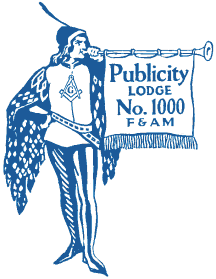

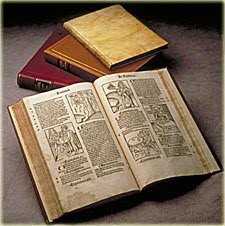


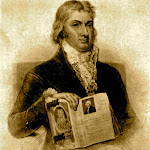




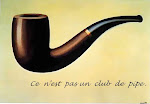
















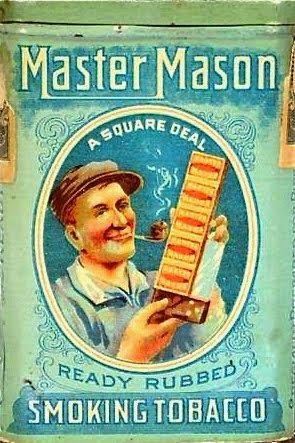


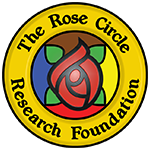

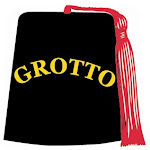








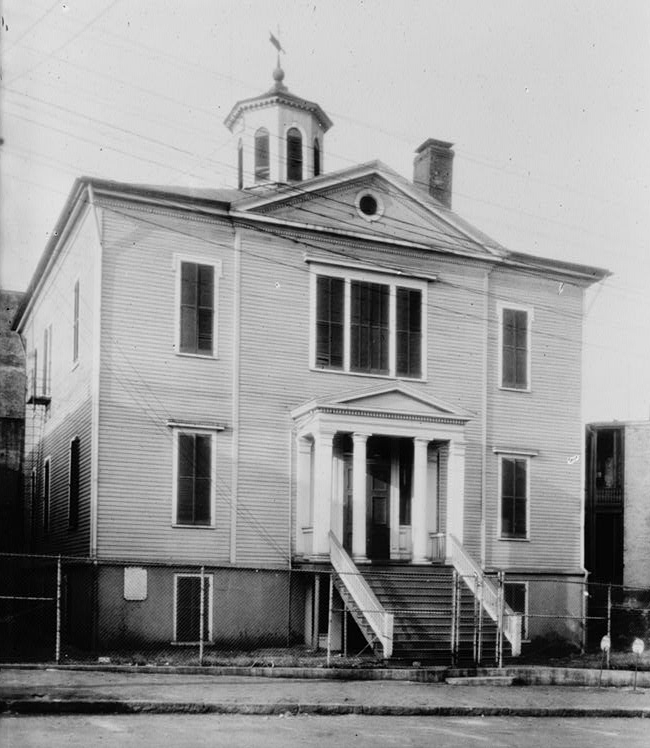
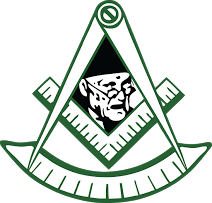
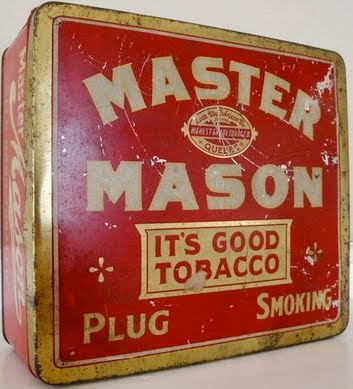



No comments:
Post a Comment